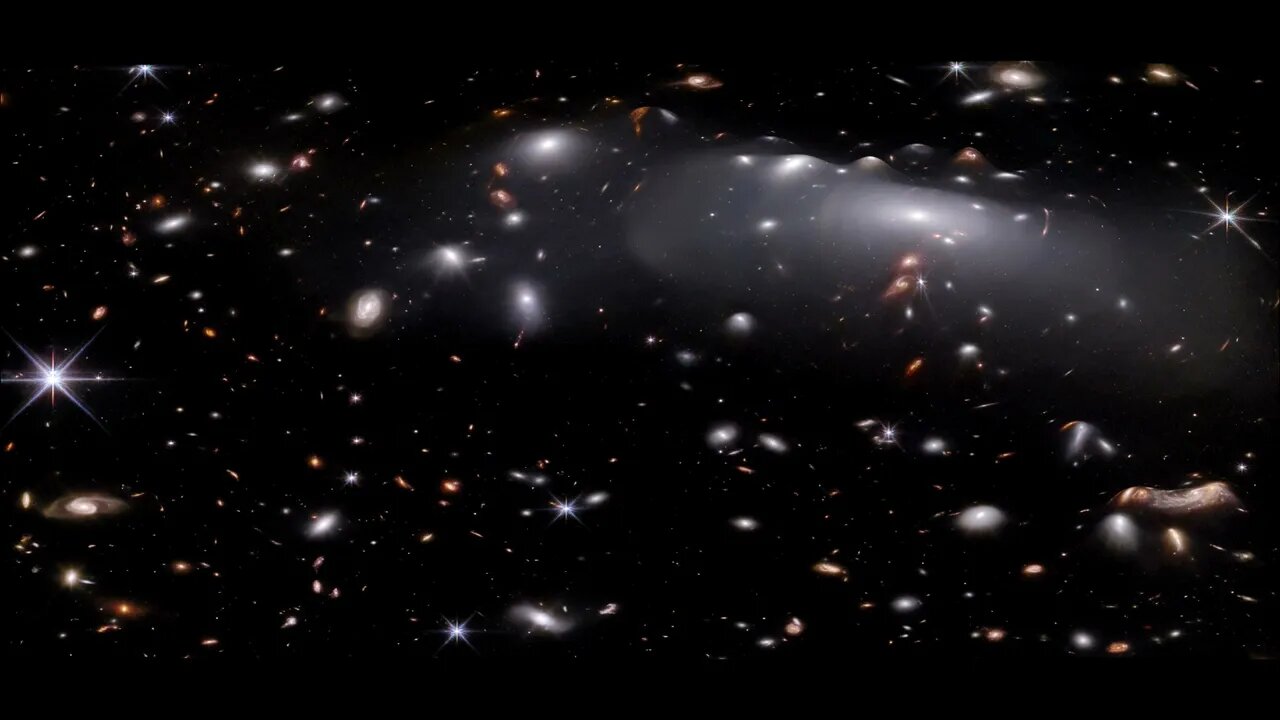Premium Only Content

Stepping Through the Looking Glass: Gravitational Lensing and the Secrets of the Universe #short
In this video, we explore the fascinating concept of gravitational lensing and how it helps astronomers measure vast distances. Thanks to powerful instruments such as the Hubble Space Telescope and James Webb Space Telescope, we can view objects that predate the formation of our solar system. Gravitational lensing allows us to observe even further back in time during the formation of our early universe. We compare this lensing effect to looking through a large cylindrical glass of water, where objects behind the glass appear distorted. Through innovative techniques based on quantum mechanics, Styx AI is developing depth maps, generative imaging, machine learning, and new mathematics to move the glass of complex nonuniform spacetime. Our process can break down an image into nearly infinite pieces, providing greater depth and detail to reveal previously unseen information.
Gravitational lensing is a phenomenon that occurs when the path of light from a distant object is curved by the gravitational pull of a massive object, such as a galaxy or a cluster of galaxies. This bending of light can cause the distant object to appear distorted or magnified, depending on the geometry of the gravitational lens.
The effect of gravitational lensing can be seen in a variety of astronomical observations, from the images of galaxies and clusters of galaxies to the cosmic microwave background radiation. In some cases, gravitational lensing can even be used to magnify distant objects that are otherwise too faint to be observed directly, allowing astronomers to study the properties of these objects in more detail.
One of the most famous examples of gravitational lensing is the Einstein Cross, which is a quasar that appears as four distinct images due to the gravitational lensing effect of a foreground galaxy. This phenomenon was predicted by Albert Einstein's theory of general relativity, which describes gravity as a curvature of spacetime.
In addition to its use as a tool for studying the properties of distant objects, gravitational lensing can also provide insight into the distribution of dark matter in the universe. Dark matter is an invisible form of matter that is thought to make up a large fraction of the total mass in the universe, and its distribution can be inferred from the gravitational lensing effect it produces.
Overall, gravitational lensing is a fascinating and powerful phenomenon that has many applications in astronomy and astrophysics. By studying the distortions and magnifications caused by gravitational lenses, astronomers can learn more about the structure and evolution of the universe, as well as the properties of individual objects within it.
STYX AI showcases this observation captured by the James Webb Space Telescope of the massive galaxy cluster RX J2129. This observation contains three different images of the same supernova-hosting galaxy, which was discovered using observations from the Hubble Space Telescope. The uniform luminosity of a Type Ia supernova allows astronomers to understand how strongly the galaxy cluster RX J2129 is magnifying background objects and therefore how massive the galaxy cluster is. Gravitational lenses can cause distant objects to appear much brighter than they would otherwise, and if the gravitational lens magnifies something with a known brightness, such as a Type Ia supernova, then astronomers can use this to measure the ‘prescription’ of the gravitational lens.
At Styx AI, we specialize in image processing of medical and astronomical images. Our commitment to advancing medical imaging technology extends to our work in cancer detection, where we use our image decomposition techniques to extract exquisitely accurate features, reconstruct images, and provide new insights into the structural morphology of target images. We are dedicated to developing and validating our software to reveal new information and insights about the universe by leveraging the pristine astronomical imaging data released by NASA and other organizations.
Join us as we step through the looking glass and reveal the secrets of the universe through gravitational lensing and innovative image processing techniques.
Credit:ESA/Webb, NASA & CSA, P. Kelly
Processed by STYX AI
@NASA @NASAGoddard @NASAJPL @NASAgovVideo @NASAWebbTelescope @EuropeanSpaceAgency
#GravitationalLensing
#AstronomicalImaging
#jameswebbspacetelescope
#hubblespacetelescope
#deepspace
#quantummechanics
#machinelearning
#styxai
-
 LIVE
LIVE
Spartan
1 hour agoExpedition 33, Halo Later on (Maybe)
40 watching -
 LIVE
LIVE
Meisters of Madness
27 minutes agoFinals and Wuchang!
36 watching -
 LIVE
LIVE
Lofi Girl
2 years agoSynthwave Radio 🌌 - beats to chill/game to
273 watching -
 LIVE
LIVE
BBQPenguin_
1 hour agoTasking & PVP
41 watching -
 LIVE
LIVE
FrizzleMcDizzle
3 hours agoGladius, Creature of the Night - NEW NIGHTLORD - NightReign
16 watching -
 8:31
8:31
MattMorseTV
1 day ago $1.48 earnedTexas just did the IMPOSSIBLE.
64.1K87 -

Rotella Games
19 hours agoGreen Hell Day 6 | We Have a LONG Way to Go
12.8K4 -
 41:26
41:26
The Mel K Show
6 hours agoMel K & Clay Clark | Financial Success Hides Behind Self Discipline: Five Pillars | 8-24-25
31.9K3 -
 LIVE
LIVE
The Rabble Wrangler
13 hours agoThe Best in the West Plays Battlefield 2042 | Road to BF6 Grind
27 watching -
 2:29:17
2:29:17
JTtheSG
3 hours agoLIVE Replay - Back To The Deadzone!!!
13.8K